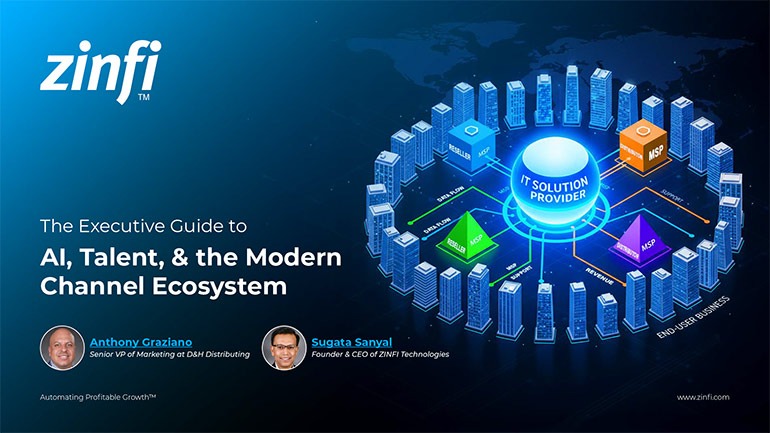Glossary - How to - Partner Acquisition Best Practices
How to Implement Partner Acquisition Best Practices?
Introduction
Understanding Partner Acquisition Best Practices
Partner acquisition identifies, recruits, and onboards partners who can drive business growth. These partners can include resellers, distributors, system integrators, and affiliates. Effective partner acquisition best practices ensure businesses attract the right partners, establish mutually beneficial relationships, and drive long-term success. In a competitive business environment, a structured approach to partner acquisition is essential for companies looking to expand their reach and revenue.
Implementing best practices in partner acquisition is crucial for organizations that rely on a channel ecosystem. Businesses must develop a strategic framework that aligns with their objectives, market needs, and partner capabilities. By leveraging automation tools such as Partner Relationship Management (PRM) software, companies can streamline their partner recruitment processes, enhance collaboration, and track performance more efficiently.
The Role of PRM in Partner Acquisition
Partner acquisition is a fundamental aspect of PRM, ensuring that businesses recruit high-quality partners who can contribute to revenue growth. PRM platforms provide businesses with tools to automate partner engagement, monitor performance, and facilitate communication. By integrating PRM solutions, organizations can execute their partner acquisition strategy more effectively, leading to higher productivity and stronger relationships. ZINFI’s PRM solutions help businesses optimize their partner programs through automated workflows, data analytics, and targeted marketing campaigns.
Key Takeaways:
Define Your Ideal Partner Profile:
A successful partner acquisition strategy starts with identifying the ideal partner. Businesses should consider factors like market expertise, sales capabilities, geographic reach, and alignment with company goals. Conducting a detailed partner persona analysis ensures companies recruit partners who fit their needs.
- Actionable Tip: Create a checklist that includes key characteristics of an ideal partner and use it as a reference during recruitment.
Develop a Targeted Recruitment Strategy:
Once the ideal partner profile is found, companies should develop a recruitment strategy that includes digital marketing, direct outreach, and industry networking. Leveraging data analytics and PRM software can help organizations identify potential partners and track engagement.
- Actionable Tip: Use targeted email campaigns and social media advertising to reach high-potential partners.
Streamline the Onboarding Process:
A structured onboarding process is critical to ensuring new partners quickly become productive. Clear training materials, setting expectations, and offering continuous support are crucial in effective onboarding.
- Actionable Tip: Implement a step-by-step onboarding program with video tutorials and knowledge base resources.
Establish Clear Performance Metrics:
Setting measurable goals helps track partner success and ensures alignment with business objectives. Metrics like lead generation, sales performance, and customer satisfaction should be regularly monitored.
- Actionable Tip: Use PRM dashboards to track real-time partner performance.
Foster Strong Relationships Through Engagement:
Building strong relationships with partners requires ongoing communication, support, and incentives. Providing marketing resources, hosting training sessions, and recognizing top-performing partners can improve engagement.
- Actionable Tip: Implement a rewards program that incentivizes partner achievements.
Summary of Key Takeaways:
Implementing partner acquisition best practices involves:
- Defining an ideal partner profile.
- Developing a strategic recruitment plan.
- Streamlining onboarding for efficiency.
- Establishing clear performance metrics.
- Engaging partners through continuous support.
By following these best practices, businesses can enhance their partner ecosystem, drive revenue growth, and create lasting partnerships.
Key Examples:
- Automotive Manufacturing: Car manufacturers rely on a network of dealerships and service centers. Implementing a structured partner acquisition strategy ensures that dealerships align with brand standards and customer service expectations.
- Consumer Electronics: Electronics companies benefit from retail and online resellers. Establishing strong relationships with partners through PRM tools enhances market penetration and brand consistency.
- Energy Production: Energy providers partner with distributors and installers to expand their reach. An efficient partner onboarding process ensures compliance with industry regulations and operational efficiency.
- Financial Services: Banks and financial institutions work with affiliates and third-party brokers. Targeted recruitment and automated tracking help manage partner performance and regulatory compliance.
- Food and Beverage: Franchise models depend on strong partner acquisition strategies. Establishing clear guidelines and training ensures brand consistency and operational success.
- Healthcare Services: Healthcare providers collaborate with insurance companies and medical distributors. Defining partner criteria and tracking engagement improves service delivery.
- Information Technology: IT companies leverage value-added resellers (VARs) and managed service providers (MSPs). Implementing PRM software optimizes partner onboarding and performance tracking.
- Pharmaceutical Development: Pharmaceutical firms partner with research institutions and distributors. Establishing structured recruitment and compliance processes ensures smooth collaboration.
- Retail Industry: Retail businesses partner with suppliers and logistics companies. A well-defined acquisition strategy enhances supply chain efficiency and customer satisfaction.
- Telecommunications: Telecom providers work with resellers and infrastructure partners. Clear performance metrics and automated workflows improve operational efficiency.
Conclusion:
Effective partner acquisition best practices enable businesses to attract, onboard, and engage partners efficiently. Organizations can optimize their partner ecosystem by defining an ideal partner profile, developing a structured recruitment strategy, streamlining onboarding, and tracking performance metrics. Implementing PRM solutions further enhances these processes, leading to improved collaboration, increased revenue, and long-term success.
Investing in a comprehensive partner acquisition strategy is essential for businesses looking to scale. By following these guidelines, businesses can develop a structured, effective approach to partner acquisition that drives long-term success.
Associated Keywords:
- Partner Recruitment Strategies
- Partner Onboarding Best Practices
- Channel Partner Acquisition














